Wondering about podcast formats? Looking for advice on how to structure your show?
FACT: Choosing a format for your show is one of the first decisions you’ll have to make when planning your podcast. You’ll need to know your format before you give it a name and create cover artwork, and certainly before you record your first episode. That’s why we’re breaking down everything you need to know about podcast formats: what they are, the different types, and how to choose your own.
What is a Podcast Format?
Podcast formats are ways to organize your show’s content. They are delivery methods that give your podcast a structure. The right format will keep your content organized and make it accessible to your listeners. Without a strong format, your show will seem disjointed and messy.
Podcast formats also create consistency for your listeners. When you stick to a format, your listeners will know what to expect when they open each new episode. If your show features a serious solo monologue one week, a comedic panel the next, and a fictional story the week after, you’ll have a hard time holding on to your listeners.
Plus, a good format will help your listeners describe your show to their friends. They’ll be able to say, “It’s two guys drinking beer and reviewing the latest movies” or “It’s an eight-episode story about a haunted town in New England.” This kind of word-of-mouth marketing is critical to the success of a show, so you’ll want to make it easy for your listeners to promote for you.
Most importantly, sticking to a single format will make your life a lot easier. It’s much simpler to plan content ahead of time when you know how you’ll shape it for each episode.
For example, if you choose an interview format (more on that in a minute), you can schedule guests for weeks or months ahead of your actual recording day. This gives you time to find the right people and prepare for the interview. If you choose a conversation-style podcast with a co-host, you will learn over time how to riff off one another to create an engaging experience for your listeners.
Grow Your Audience with the Right Analytics
In order to make smart decisions, you need access to the best information. Building an audience and growing your show require clear data.
Instead of reviewing your data across multiple platforms, Castos puts everything in one simple place. It’s now easier than ever before to access a full snapshot of an episode in one look.
What can Castos Analytics show you?
Castos Analytics offers a plethora of statistics about your podcasts that will help you to learn more about your audience.
- Review the total listens/downloads per podcast and per episode. Filter by each individual podcast and select custom date ranges. Use this to give your audience what they want and attract sponsors with your best content.
- Learn the total subscribers per podcast. This is a proprietary calculation that’s unique to Castos. Learn how many people receive automatic updates for each episode.
- Learn the browsers and apps your listeners use. Do they use your podcast website? A specific listening app? Which platform demands more of your attention?
- Learn which devices your listeners use. Custom tailor your messaging to fit your audience and find unique partnership opportunities.
- Discover where your audience is located. You could organize local meetups for your podcast community and explore ways to reach your audience directly in their market.
Which plans offer analytics?
Our Essentials and Growth plans offer listener analytics. Our Pro and Premium plans offer advanced analytics. See our pricing.
Find Where the Growth Opportunities are Hiding
Understanding your podcasts’ performance is essential, which is why accurate analytics are so important. Join Castos to learn as much as you can about your listener. Every insight and nugget of wisdom will help you grow your show.
Dive Into Castos AnalyticsWhat about the podcast structure, then?
Podcast structure, on the other hand, defines how you deliver on your chosen format. It defines the framework – all the segments your podcast show will include.
And, as you can imagine, different podcast formats will use different structures or frameworks. That said, there are several key elements every podcast episode should include. These critical podcast structure elements include:
- The intro telling listeners what your show is about, and presents a hook to get them to continue listening.
- The content of the episode. This section will largely depend on the format you’ve chosen for your podcast.
- The outro closing each episode, and including a call to action, a promise of what’s coming next in your show, and also, asking listeners to rate, review and subscribe to your show.
The 8 Most Popular Podcast Formats
Before you choose a format for your show, it helps to understand what everyone else is doing. While you don’t have to be like everyone else, there are good reasons that podcasters stick to the following popular podcast formats. Each has their own pros and cons. As you go through the following list, ask yourself which would be right for your show.
1. The interview podcast format
An interview style show features a host (or two) who interview a new guest in each episode who brings their unique expertise and experience. After a brief guest introduction, the host takes over asking questions to guide the conversation around the episode’s topic working to unpack their stories and lessons. Since each guest is different, it’s best to stick to central them to keep your show cohesive.
Pros
- Your guests do most of the talking. You just have to steer the conversation.
- Listeners are forgiving about little mistakes (ums, likes, and brief pauses) because they know you’re having a legitimate conversation.
- Opens your show to a new audience because your guests promote their appearance on your show, especially to their fan base.
- Your show gains access to a variety of viewpoints and opinions, which stimulates discussion and adds value for your listener.
Cons
- This is an extremely popular format, so you’ll struggle to stand out.
- Interviewing is a skill that takes patience and practice.
- Finding a new guest for each episode takes a lot of work.
- If you interview someone over Skype or Zoom, you’re at the mercy of your connection. It may take a few tries to get enough audio for an episode.
- You have to do some deep research on your guests.
- In some sense, you rely on your guests’ ability to entertain and deliver information. Your episode will suffer if they’re difficult, inarticulate, or boring, (unless you can compensate).
Examples of the interview podcast format
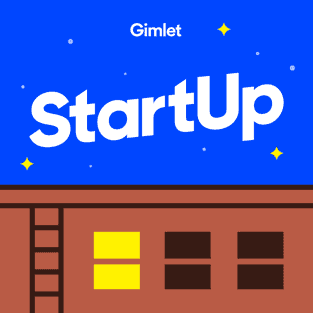
StartUp Podcast
StartUp is a documentary series about entrepreneurial life. Its first season has been adapted into an ABC sitcom called Alex, Inc. starring Zach Braff. StartUp has won a Gracie Award and the Gerald Loeb Award for Distinguished Business and Financial Journalism.
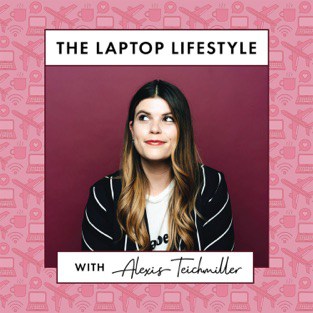
The Laptop Lifestyle
The Laptop Lifestyle is for virtual entrepreneurs, millennials on the go, and adventure seekers with big dreams. It was created with the intention to educate, inspire, and challenge you to live the life you’ve always wanted. A life where you set your own hours and earn a living online.
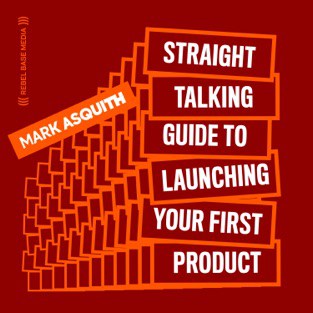
The Straight Talking Guide to Launching Your First Product
Take your product or business from idea to launch in just 8 hours with this free audio guide. Featuring Chris Ducker, Ash Maurya, Adam Farah and more PLUS free templates and resources to help you every step of the way.
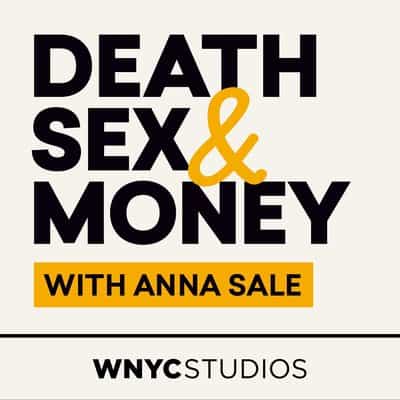
Death, Sex & Money
A podcast hosted by Anna Sale about the big questions and hard choices that are often left out of polite conversation.
2. The solo/monologue podcast format
This podcast format is fairly common. It’s used by people who have a specific kind of expertise they want to share. There isn’t much fanfare or setup. You simply talk into a microphone. Many new podcasters start with this format because it’s so simple. All you need to get started is a microphone and some free editing software.
If you choose this podcast format, you’ll have to decide how much you want to plan each episode. Some podcasters are comfortable ad libbing off a few notes, but others have a hard time talking for 30-45 minutes without detailed preparation. You may decide to write a complete script for each episode.
Pros
- You don’t have to rely on anyone’s help or involvement. Everything happens on your own schedule and at your own pace.
- Your audience comes to know you intimately. This is powerful for brand building.
- Editing one voice is much easier that editing multiple tracks.
- If you don’t like how you said something, you can simply say it again and cut out the bad bits.
Cons
- It’s a lot of talking. Speaking for 30 to 45 minutes is tiring. And that’s only if you record it perfectly the first time. Realistically, you’ll talk for an hour or more for each episode.
- You don’t have anyone to bounce ideas off (unless you have a partner or team behind the scenes) or help you promote.
- If you’re nervous behind the mic, you may need to practice a bit before recording for your first episode.
Examples of the solo/monologue podcast format:
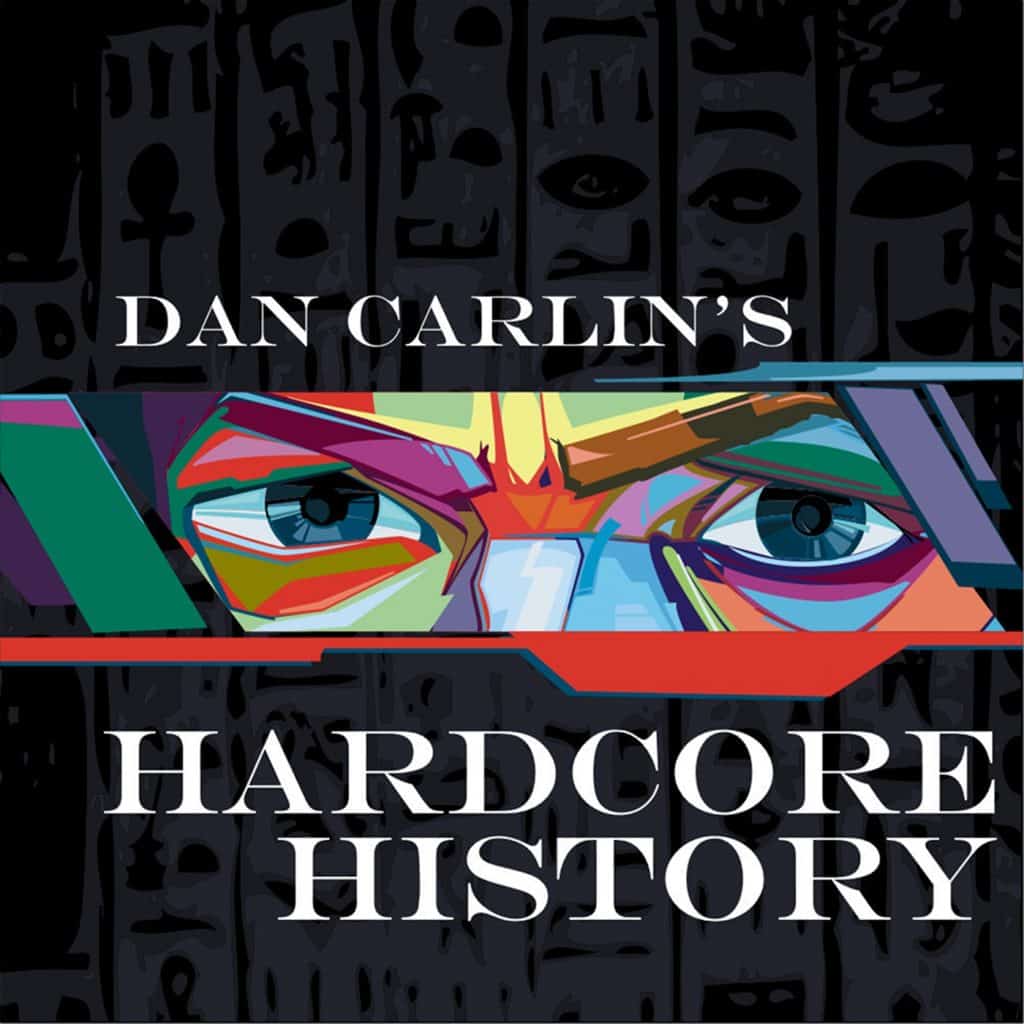
Dan Carlin’s Hardcore History
Dan Carlin takes his unorthodox way of thinking and applies it to the past. This isn’t academic history (and Carlin isn’t a historian) but the podcast’s unique blend of high drama, masterful narration and Twilight Zone-style twists has entertained millions of listeners.
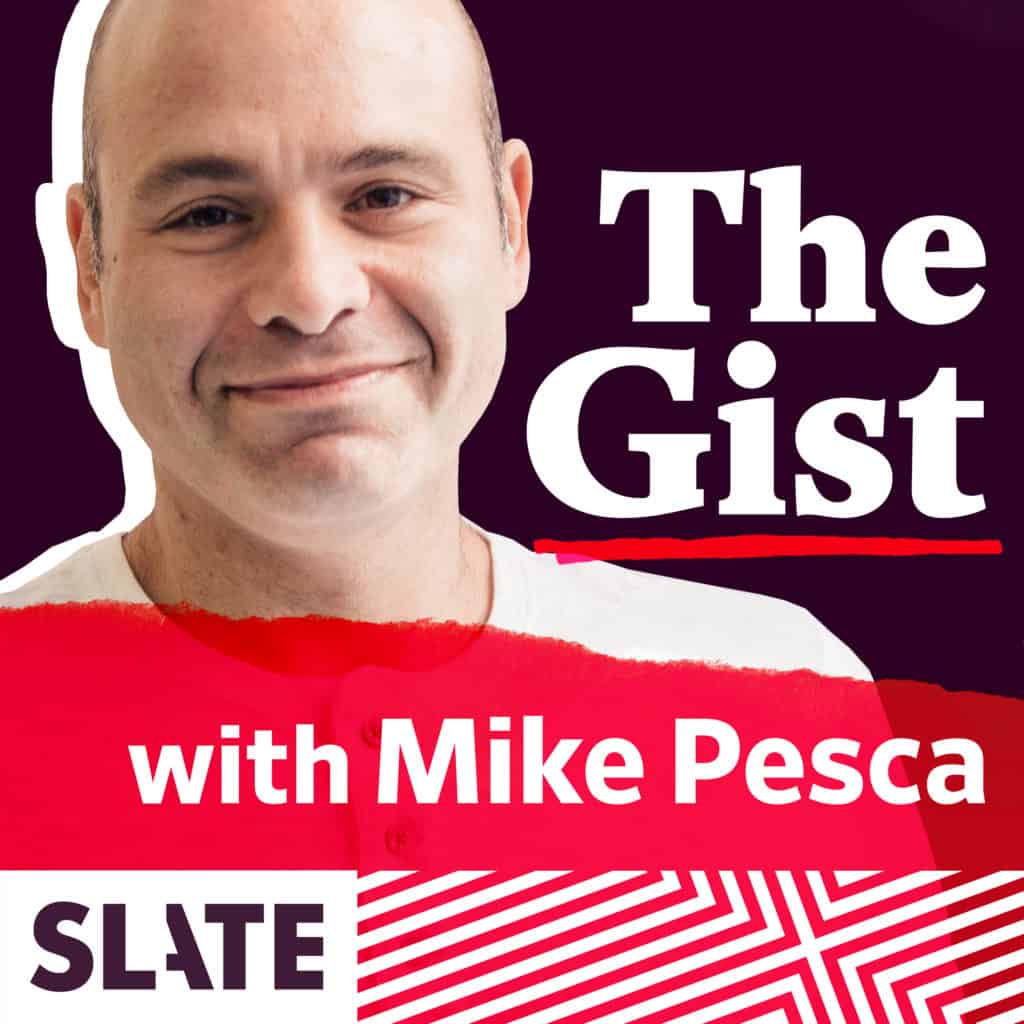
Slate’s The Gist
Slate’s The Gist with Mike Pesca. A daily afternoon show about news, culture, and whatever else you’ll be discussing with friends and family tonight.
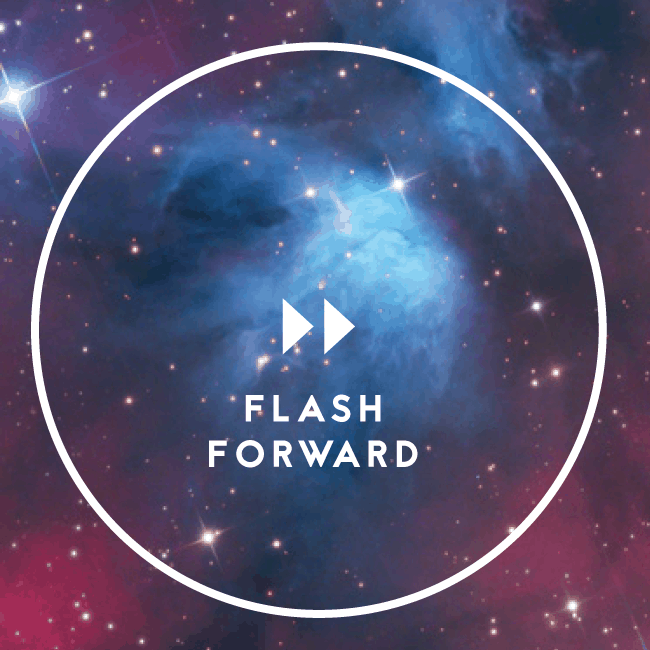
Flash Forward
Flash Forward is a show about possible (and not so possible) future scenarios. Each episode combines audio drama and journalism to go deep on potential tomorrows, and uncovers what those futures might really be like. The future is going to be weird, so let’s get ready for it together.
3. Conversational/co-hosted podcast format
This is another common podcast format. It involves two people having a straightforward conversation who generally have great chemistry together. Unlike an interview podcast format, however, these two people are both hosts.
In many cases, each host will play a specific role in the conversation. One might report the news snippet while the other provides commentary or comedy. One might teach lessons while the other tells stories from their experience.

Pros
- You’re only responsible for half the conversation. You might also split up all the other tasks that come with producing and promoting a podcast.
- Fans feel like they’re part of a club or group, especially when the hosts create an entertaining, friendly environment.
- It’s easy to listen to an organic conversation rather than a prepared script.
Cons
- You both need to stay on the same page regarding the purpose of each episode. There could be a conflict if you don’t agree on the overall message.
- It’s harder to edit two voices as opposed to one track.
- You have to choose topics you both know about (at least a little).
- Since each episode relies on conversation, you can’t do much scripting to prepare.
Examples of the co-hosted podcast format:

The Boagworld UX Show
Boagworld is a podcast about digital strategy, service design and user experience. It offers practical advice, news, tools, review and interviews with leading figures in the web design community. Covering everything from usability and design to podcast marketing and strategy, this show has something for everything.
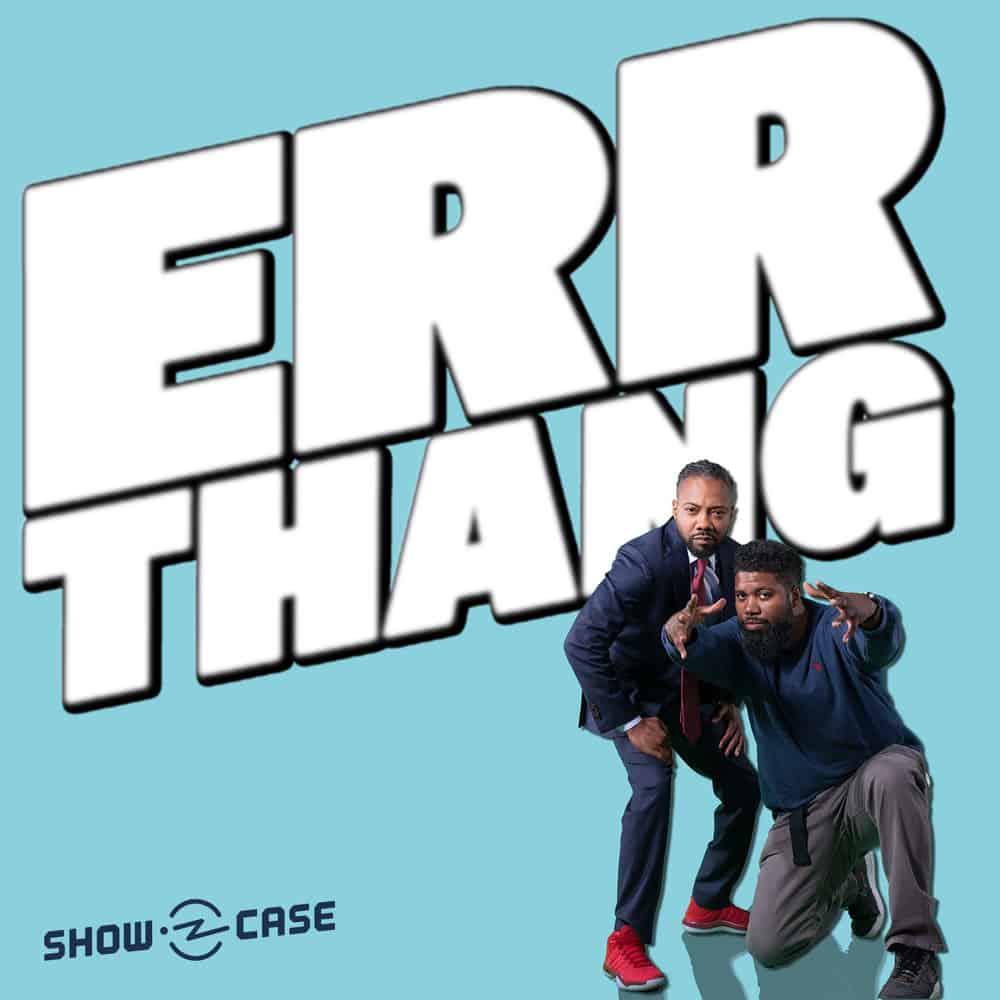
Errthang Show!
For his latest project, Al Letson takes all the things that are floating in his head and turns it into a mixtape of delight for you. Errthang is just that, everything from storytelling to radio drama, pop culture reviews to interviews with some of the most interesting people on the planet. It’s a vehicle to showcase all of Letson’s other talents.

Yo, Is This Racist?
For his latest project, Al Letson takes all the things that are floating in his head and turns it into a mixtape of delight for you. Errthang is just that, everything from storytelling to radio drama, pop culture reviews to interviews with some of the most interesting people on the planet. It’s a vehicle to showcase all of Letson’s other talents.
4. The panel podcast format
A panel podcast is similar to an interview podcast, but with more people. Each episode has a single host and a group of guests. For your listener, it feels like overhearing an organic conversation between friends.
Pros
- Each episode is full of unique, interesting opinions and insights.
- There’s almost no pressure on the host because the panel of guests do a majority of the talking. Some hosts only ask a few questions throughout an entire show and let the guests most of the talking.
Cons
- Filling the panel with guests is a ton of work. You’ll have to coordinate everyone’s schedule. As a new podcaster, finding even one guest is a challenge.
- You’ll have to work to keep people included (so they aren’t silent for 20 minutes), but you’ll also have to prevent them from talking over one another.
- Your guests will naturally want to talk about a topic far longer than you want them to. You’ll have to learn when to cut people off and how to move on seamlessly.
- There are some technical challenges that come with recording audio from multiple sources.
Examples of the panel style podcast format:

Slate’s Political Gabfest
Voted “Favorite Political Podcast” by Apple Podcasts listeners. Stephen Colbert says “Everybody should listen to the Slate Political Gabfest.” The Gabfest, featuring Emily Bazelon, John Dickerson, and David Plotz, is the kind of informal and irreverent discussion Washington journalists have after hours over drinks.
The Beancast
The BeanCast™ is a weekly round table podcast, featuring notables from the marketing, advertising, interactive and public relations community. We discuss the latest industry news with a healthy dose of perspective.
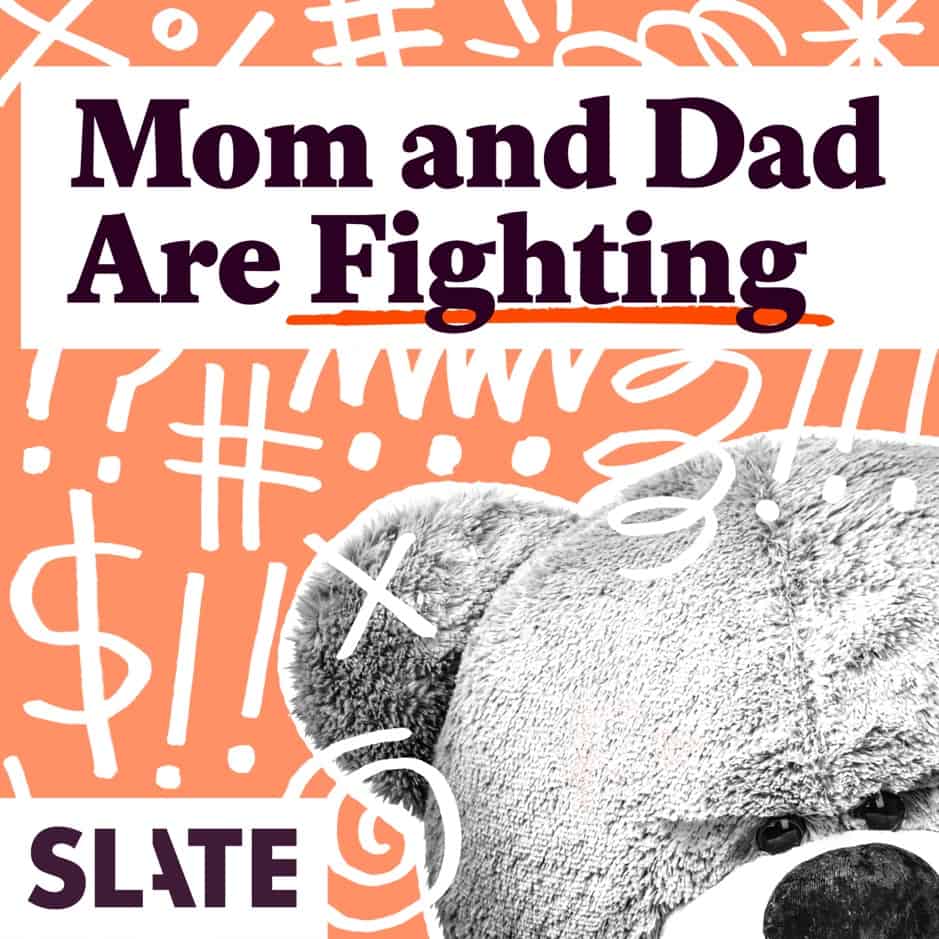
Slate’s Mom and Dad are Fighting
Rebecca Lavoie, Jamilah Lemieux, and Dan Kois share triumphs and fails and offer advice on parenting kids from toddler to teens.
5. Non-fictional storytelling podcast format
Non-fictional stories are podcast episodes about real life events. You might dive into a series of murders, chronicle an expedition up Mount Everest, or recreate a historical event. You can tell one story per episode or span your story across an entire series. Or you could simply report the news.
This is an excellent podcast format for listeners who like to learn more about our world. You have the opportunity to expose people to new ideas, concepts, and events.
Pros
- This podcast format is highly addictive for people who want to know more about a specific topic.
- You can splice in other audio elements, like news broadcasts, movie clips, or environmental sounds to enhance the experience.
- There are unlimited stories to choose from you.
Cons
- It’s hard to stick to a consistent publishing schedule because some episodes take longer than others to produce.
- You have to know what you’re talking about precisely. Listeners are reluctant to forgive mistakes of accuracy.
- This is a laborious and time consuming format, especially when it comes to research.
- This is a challenging podcast format without a big team behind you.
Examples of the non-fictional storytelling podcast format:

This American Life
This American Life is a weekly public radio show, heard by 2.2 million people on more than 500 stations. Another 2.5 million people download the weekly podcast. It is hosted by Ira Glass, produced in collaboration with Chicago Public Media, delivered to stations by PRX The Public Radio Exchange, and has won all of the major broadcasting awards.
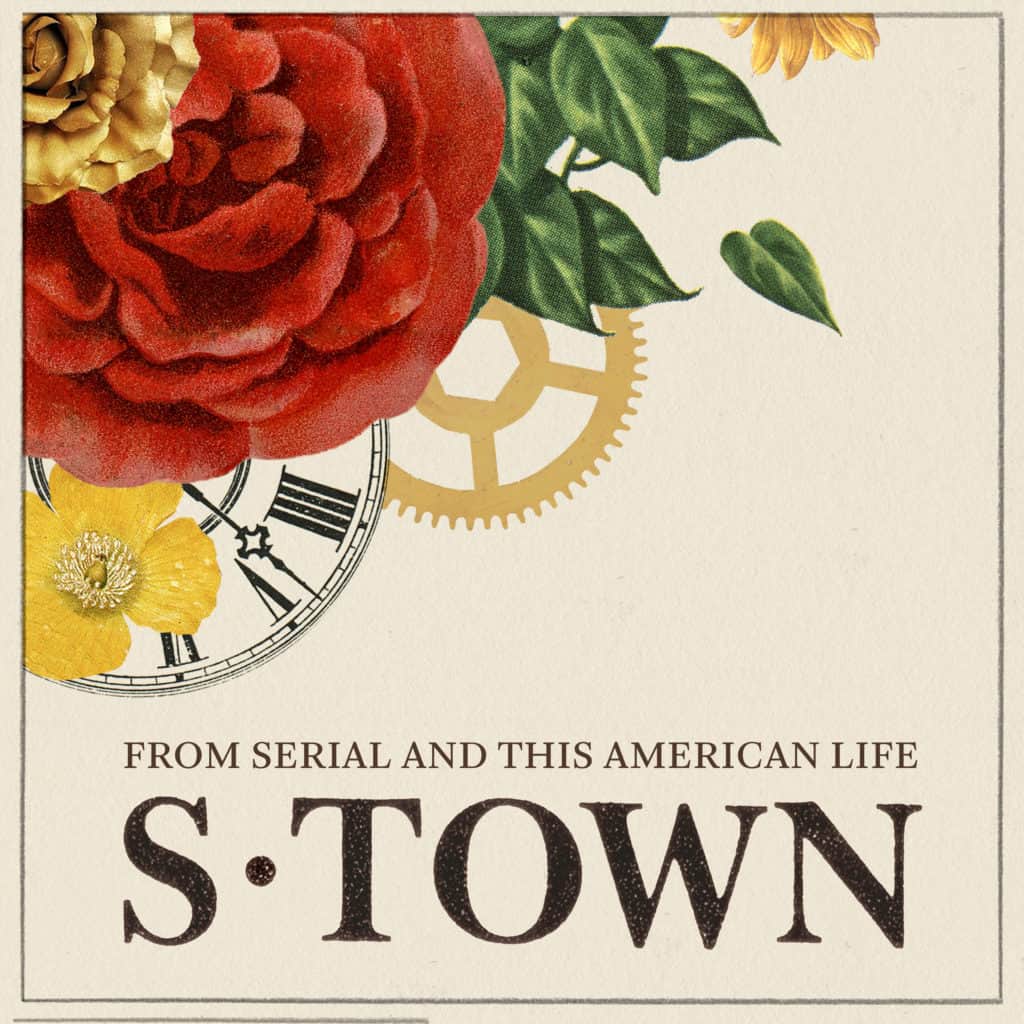
S-Town
S-Town is about a man who despises his Alabama town and decides to do something about it. He asks Brian to investigate the son of a wealthy family who’s allegedly been bragging that he got away with murder. But when someone else ends up dead, the search for the truth leads to a nasty feud, a hunt for hidden treasure, and an unearthing of the mysteries of one man’s life.
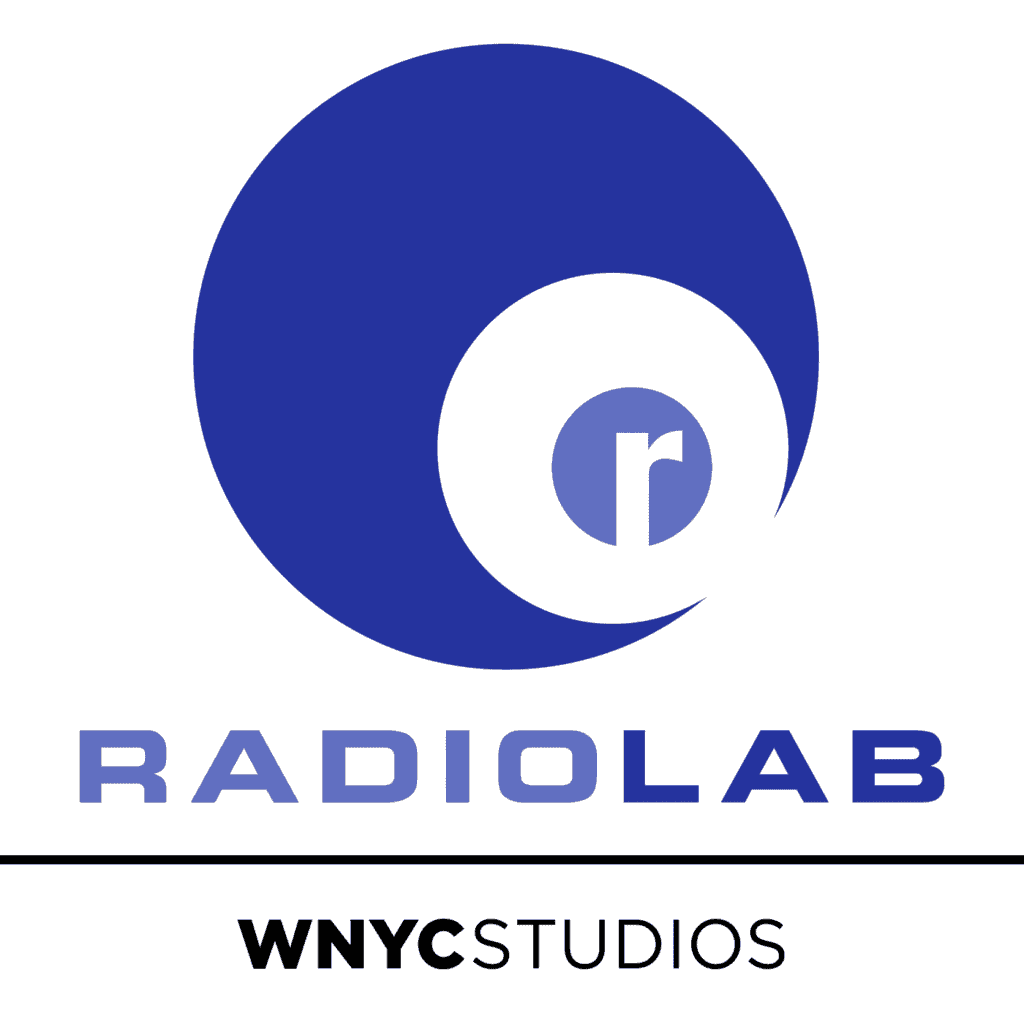
Radiolab
A two-time Peabody Award-winner, Radiolab is an investigation told through sounds and stories, and centered around one big idea. In the Radiolab world, information sounds like music and science and culture collide. Hosted by Jad Abumrad and Robert Krulwich, the show is designed for listeners who demand skepticism, but appreciate wonder.
6. Podcast theater podcast format
Also know as Fictional Storytelling podcast format, these are fictional stories told across multiple episodes, similar to dramatic television. Some are narrated by a single voice. Others use multiple voice actors, sound effects, and other audio elements. Just like TV shows, these podcasts use tension, climaxes, and cliffhangers to tell their stories.
This is a great format for creative types who like to create characters, weave plots, and build fictional worlds. If you like to write fiction or make films, this format may be right for you. In fact, some fiction writers simply read their stories dramatically like audio books and release them as podcast episodes.
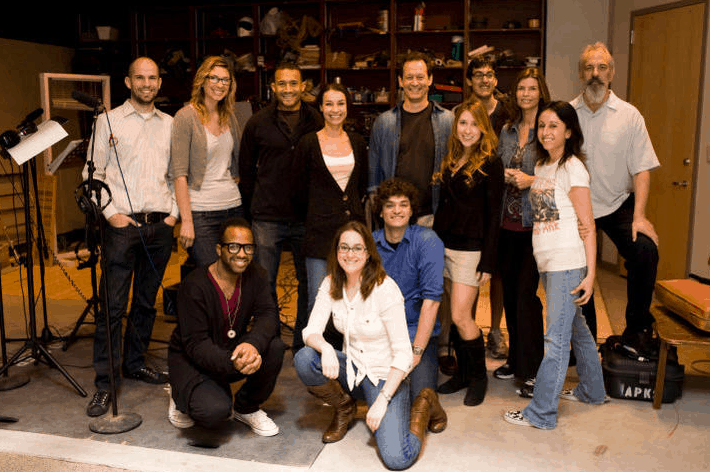
Pros
- Audiences are highly “sticky” because they need to know what happens next, especially if you weave your episodes together well.
- This is the least common podcast format, so there’s little competition among other podcasts.
- You get to make it all up, so you can worry less about factual accuracy.
Cons
- It’s an unusual format, so building an audience will take time and work.
- You’d be competing with every other source of drama and storytelling, including TV, movies, and YouTube.
- Since all episodes relate to one another, you basically have to plan your entire “season” upfront so you hit all the right plot points and end in the right spot.
- This is a poor format for uncreative people.
Examples of the podcast theater format:

Welcome to Nightvale
Twice-monthly community updates for the small desert town of Night Vale, where every conspiracy theory is true. Turn on your radio and hide. Never listened before? It’s an ongoing radio show. Start with the current episode, and you’ll catch on in no time. Or, go right to Episode 1 if you wanna binge-listen.

We’re Alive: A “Zombie” Story of Survival
Filled with action, battles with the undead, love triangles, conflicting loyalties, and of course gold, WE’RE ALIVE: GOLDRUSH stands out as a truly unique Theater for the Mind experience for both new and old listeners.

Limetown
In this podcast, American Public Radio reporter Lia Haddock asks the question once more, “What happened to the people of Limetown?”
7. Repurposed content podcast format
Repurposing content is when you take content that already exists and transform it in a way to get more value out of it. You might add to it, split it up, or transpose it to a new medium. Some bloggers simply take existing written content and repurpose it into a podcast for an audio experience.
For instance, a religious organization may turn their weekly sermon into a downloadable podcast. A speaker could record and release his lectures. A comedian might publish recordings from his standup routines.
Pros
- Easy to produce this content because you already have it. You just have to do some editing to format it like a podcast.
- Since you don’t have to make the content, you don’t need a big budget.
Cons
- Since the content wasn’t originally intended for a podcast, it might not feel quite right. For instance, a lecturer might ask his audience for a “show of hands,” which obviously isn’t interactive through a podcast.
- People have other ways of getting the exact same content.
Examples of the repurposed content podcast format:

TED Radio Hour
Guy Raz explores the emotions, insights, and discoveries that make us human. The TED Radio Hour is a narrative journey through fascinating ideas, astonishing inventions, fresh approaches to old problems, and new ways to think and create.
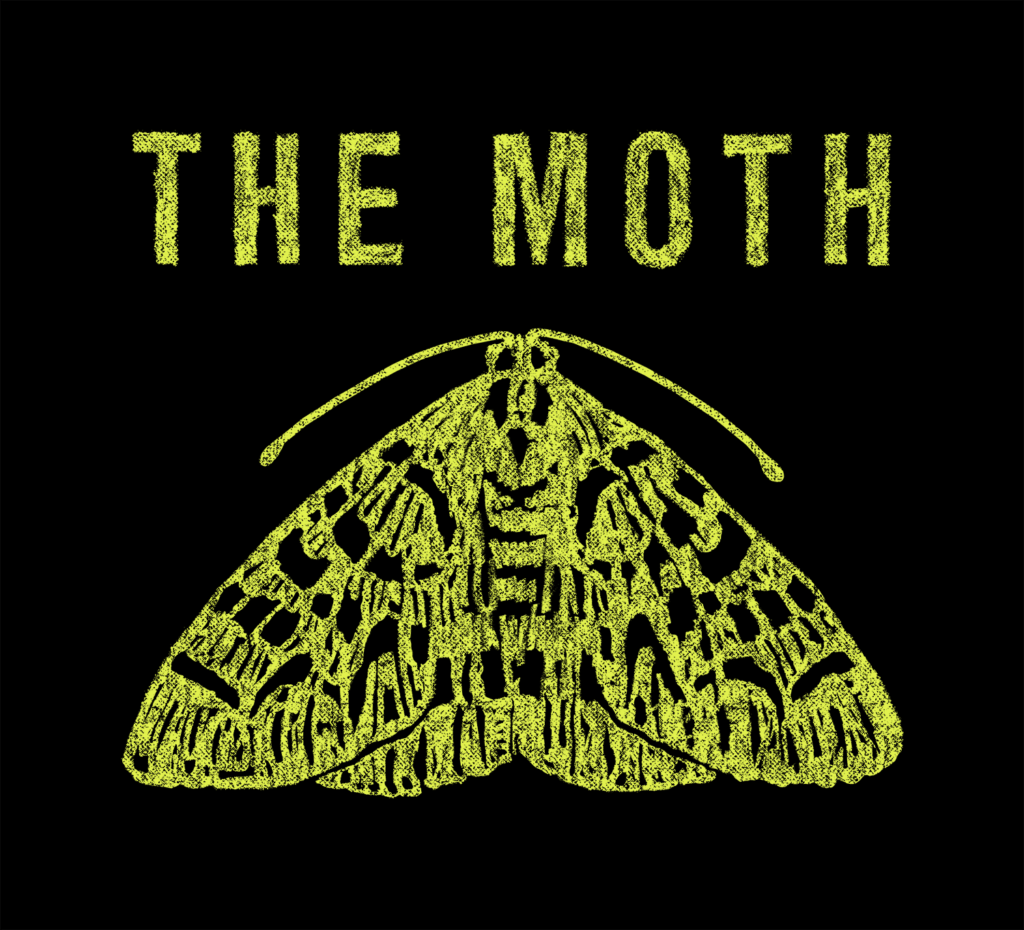
The Moth
Since its launch in 1997, The Moth has presented thousands of true stories, told live and without notes, to standing-room-only crowds worldwide. Moth storytellers stand alone, under a spotlight, with only a microphone and a roomful of strangers. The storyteller and the audience embark on a high-wire act of shared experience which is both terrifying and exhilarating.
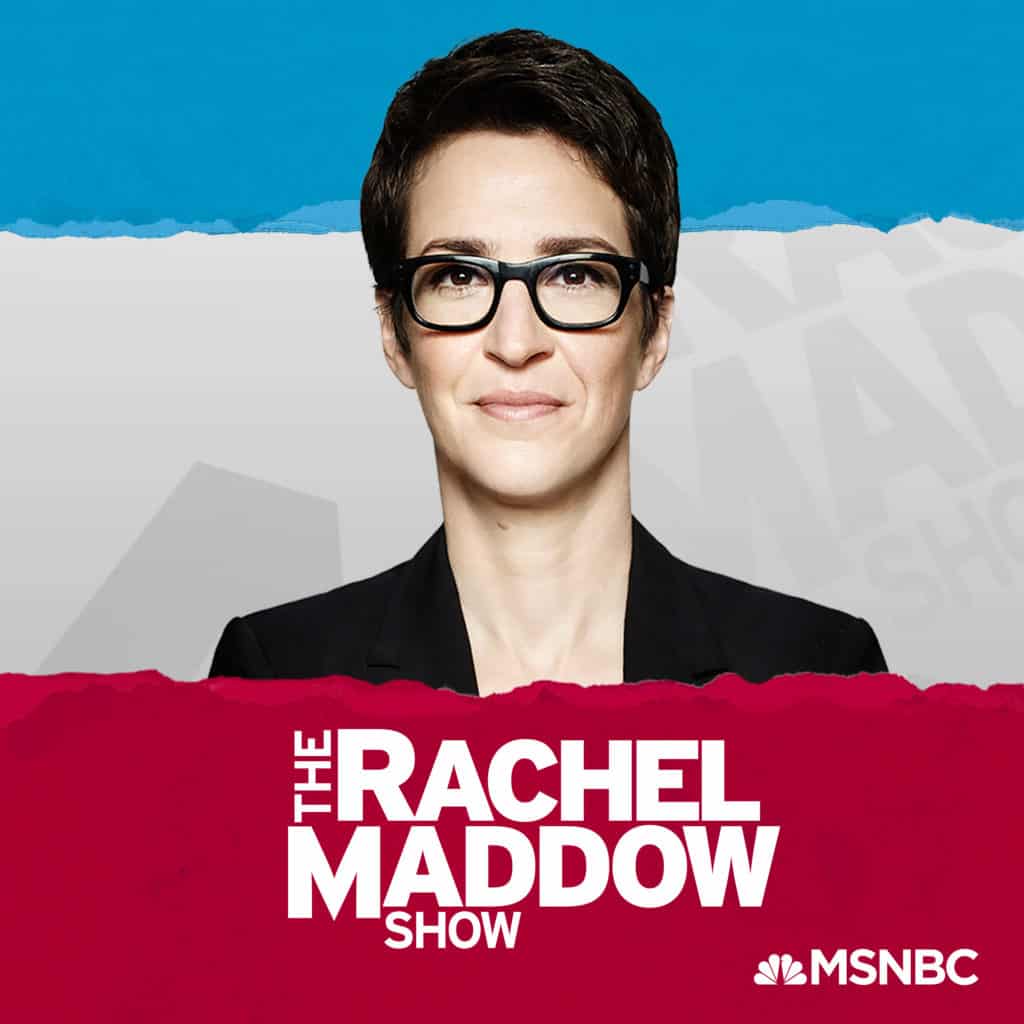
The Rachel Maddow Show
Rachel Maddow works with unmatched rigor and resolve to explain our complex world and deliver news in a way that’s illuminating and dynamic, connecting the dots to make sense of complex issues. Join her every weeknight as she provides in-depth reporting to illuminate the current state of political affairs and reveals the importance of transparency and accountability from our leaders.
8. Your own podcast format
One of our favorite things about podcasting is that it’s just as dynamic as writing or video. You can do anything you like to stand out, build an audience, and engage your listeners.
If you want to do something unique that doesn’t fit into a traditional podcast format – that’s okay! Experiment with your own style or mix several styles together to create something entirely new.
Video Podcasting: A Unique Podcast Format
You’re already doing the work of creating informative and entertaining content, you might as well squeeze every ounce out of it that you can. Why not pair your audio track with video and create a vlog?
A video podcast is pretty simple: It’s just a podcast with a video component. That video component can be as simple as you and your guest recording the content. The Joe Rogan Experience is a classic example of this. Rogan films himself and his guest sitting in his studio having a discussion. The audio gets released in the traditional podcast format. The video gets released on YouTube and as clips on social media.
In some cases, podcasters splice in video footage from other sources to make their video podcast more dynamic. For instance, if the host references an event from the news, they might insert a clip from that event. (Just make sure you have the right to add other people’s content. Violating someone’s intellectual property could get your video removed.)
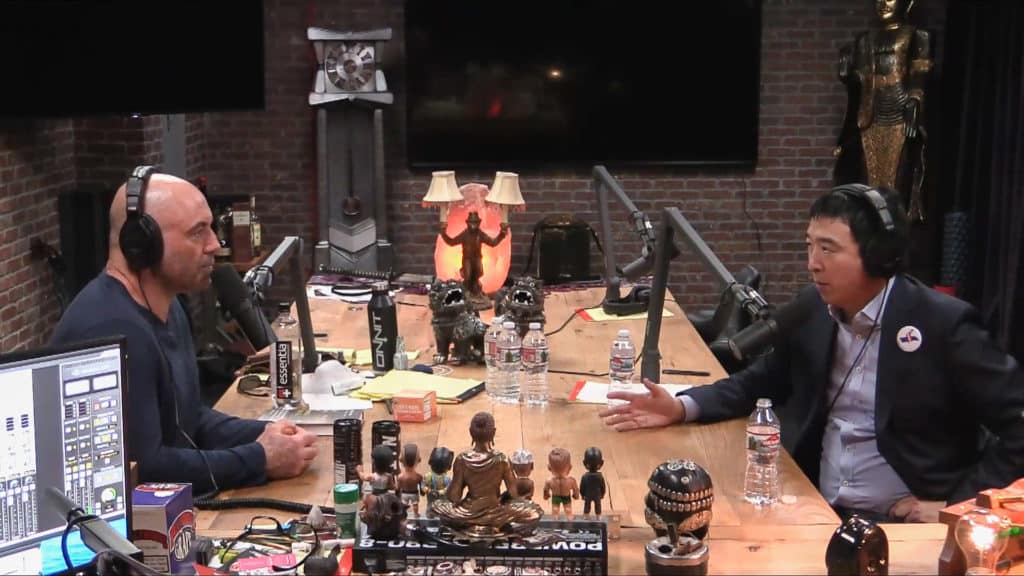
Here are some reasons you should start a video podcast:
- People love looking at faces. You can add value for your audience and help them dig deeper connections by showing them people’s faces.
- Video opens you to a wider audience. There are a lot of people out there who prefer to consume video content, so a video podcast opens you up to a larger audience.
- Video looks better on social media. Audiograms are becoming more popular, but there’s no beating the impact videos have on social media.
- You’ve already done most of the work! Recording video doesn’t add much labor to your usual process. (Though you may need to comb your hair!)
The best part about video podcasting is that it works with all of the other podcast formats that we outlined in this article. You can add a video component to any type of show.
Action
Learn more about video podcasting: 4 Ways To Create A Video Podcast (And Why You Should Try It).
How to Choose the Right Podcast Format For Your Show
Now that you know the top podcast formats, you’re probably wondering, “So which one is right for me and my show?” Great question.
In order to choose the right podcast format for your show, we recommend considering these three important questions.
What’s the best way to convey your topic’s information?Information?
The first thing you should consider is how you want to convey your information. In most cases, answering this question will decide your podcast format for you.
For example, if you want to expose your audience to expert-level advice that you don’t personally have, the interview podcast format makes the most sense. This is a simple and effective way of bringing in expert knowledge from people who live and breathe those topics. If you want to tell a fictional story, the podcast theater format is the most logical.
Consider the tone of your show, as well. Do you intend to be funny? That’s much easier to accomplish with multiple people, so you should choose the panel or co-hosted formats. Do you intend to be mellow and stoic? The monologue or non-fictional storytelling formats may be more appropriate for your show.
Which format will help your show stand out?
Next, you’ll want to consider how you can make your show stand out from the crowd. You may be able to best your competition by podcasting on the same topic, but in a different format. When listeners search for new shows to join, they’ll scroll through a sea of interview-style shows and only stop when something stands out.
For instance, if everyone in your niche is using an interview podcast format, you might try using a panel of guests to set yourself apart. Your might opt to use a format that’s traditionally hard for your niche because you know you’ll be the only one doing it. Or you could get really weird and turn your lessons into stories using the podcast theater format. That would be so unusual that people would have to check it out.
Another benefit of choosing a podcast format stands out from the competition is that you don’t have to take from your competitors audiences in order to grow. If your show is sufficiently different than other shows with the same topic, listeners will opt to listen to both because they don’t feel repetitive.
How will you promote your show?
How you plan to promote your show can also impact the podcast format that you choose. You might have experience in a marketing channel or podcast marketing assets in place that favor one format over another. In these cases, it’s smart to align your format with your channel/asset.
That might sound complex, so let’s use some examples:
- If you’re a science fiction author with an online following, a podcast theater type show makes the most sense because you have an existing audience who likes that content.
- If you’re embedded in a professional industry, an interview show seems reasonable because you have access to lots of guests who will promote their appearances on your show to their audiences.
- If you have close contacts within a podcast network, you might choose a format (and subject) that aligns with the network so you can join one day.
Action
Learn more about marketing your podcast: How To Promote A Podcast: The Ultimate Podcast Promotion and Podcast Marketing Guide
Which format aligns with your brand?
If you have an existing company or organization, the next thing you should consider is the state of your brand. If you already have a well-developed brand, it’s a good idea to choose a podcast format that fits into that structure. This will ensure that you create a cohesive experience for your audience without alienating people. If your podcast doesn’t mesh with your brand, there’s a good chance your audience will be confused and fade away.
For example, let’s say you have a popular blog where you conduct interviews with professionals in the entertainment industry. In this case, it would make sense to start a podcast that does the same thing – interviews guests.
You could host a solo monologue show where you recount your adventures in the entertainment industry, but that’s a little outside of your audience’s comfort zone. You might lose some people who prefer to hear about the lives and work of other actors and musicians, not yours.
Now imagine if you started a panel podcast where you and your friends sat around a table playing Dungeons and Dragons. That kind of show could definitely be successful, but not for your brand. It’s just too far removed from what your audience expects.
Which format aligns with your style?
Finally, it’s important to consider your personal preferences, personality, and style. As the podcast host, you have to like your format. You have to enjoy sitting down to craft and record new episodes. You have to enjoy talking about your show and shamelessly promoting it.
Look at it like this: If you don’t enjoy your format, you’ll dread creating new content. You’ll struggle to find the motivation to hunt for new guests. You’ll ask your guests lackluster questions. You’ll settle for “good enough” whenever you craft a podcast script, rather than strive to make the best content possible.
Furthermore, if you like what you’re doing, you’ll get better at it over time because you’ll care about it. You’ll constantly look for ways to make your show better, produce better content, and engage with your audience. You’ll care enough to put in the extra effort to land that tough guest, explain that complex topic, or boost your show’s production value.
Don’t choose a format that’s completely out of your wheelhouse. You’ll hate the work, burn out quickly, and probably podfade. Make sure to choose a podcast format that makes you happy.
Switching Podcast Formats
Choosing a podcast format may feel like a big decision, but it’s important to keep in mind that you aren’t locked into your format forever. It’s totally possible to change. In fact, many successful podcasts have changed formats without losing a single download.
Furthermore, it’s quite possible to dip your toes into a new podcast format without committing all the way. For instance, if you typically host interviews, it’s okay to sprinkle a panel episode or a solo monologue every once in a while. As long as you don’t Veer too far from what your audience expects, no one will mind. They may even enjoy an occasional change of pace.
However, keep in mind that you can’t transition too far without losing some of your audience. If your format for topics changes too much, you might find yourself producing a show that your current audience doesn’t enjoy. You’ll have to begin building a new audience from the beginning.
Choose Wisely
As you can imagine, your choice of podcast format has a big impact on your show. It will guide how you create content, who you invite as guests, and how you (and possibly your team) work to record and publish episodes. There’s no law that says you have to use one of the podcast formats we listed above, but they’re popular for a reason-they work! Make sure to give this question plenty of thought.
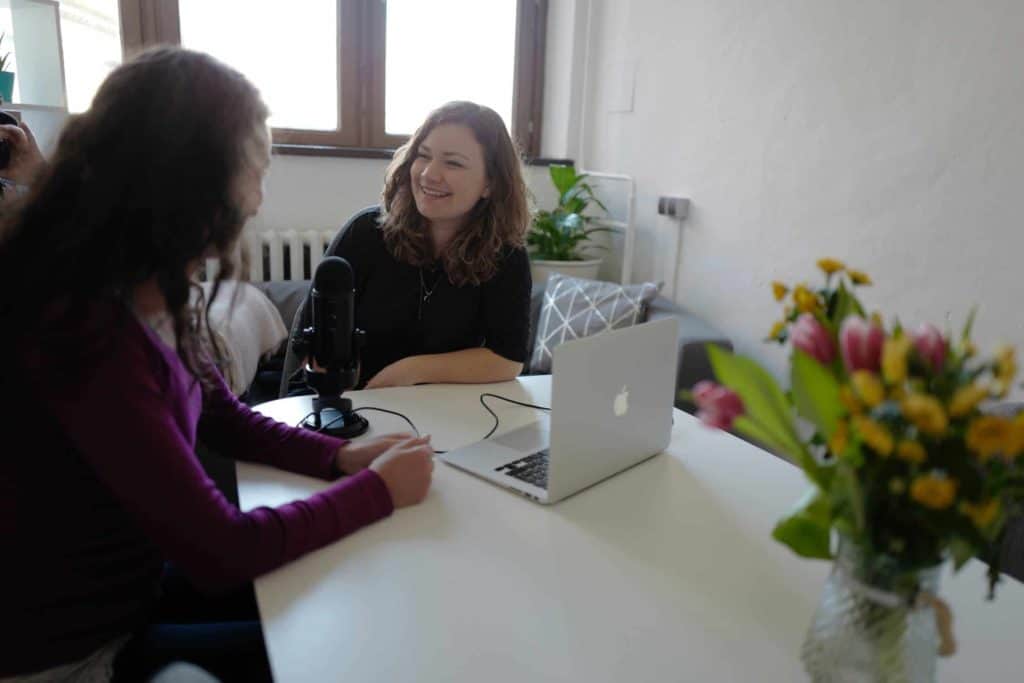
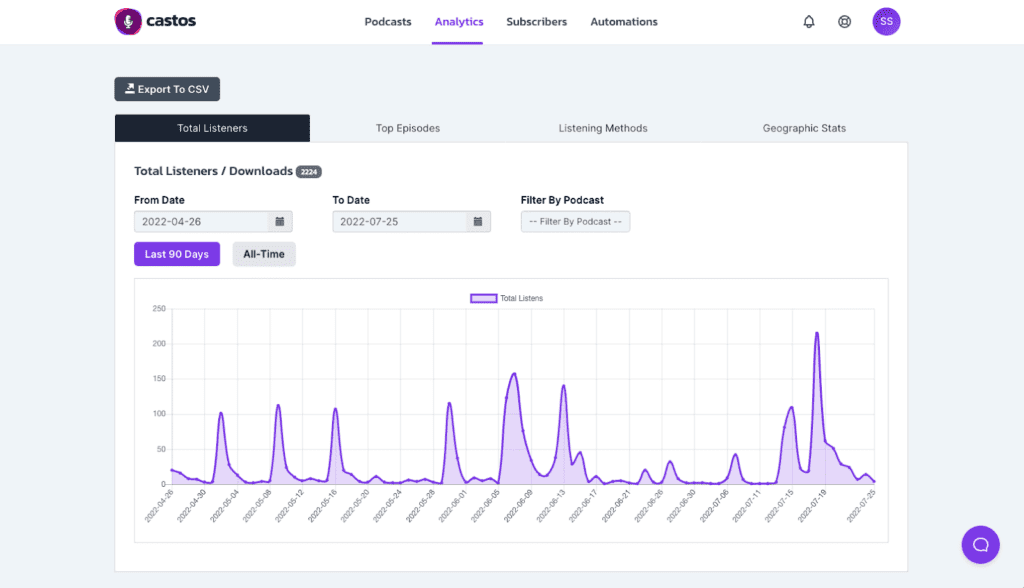



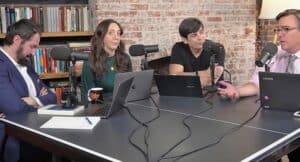
This is something really interesting! This article about podcast helped me a lot to know the stuff which I should know before starting the podcast.
Who’s the best podcasting service do I need a website or who can I join to publish my podcasts
Nice. Simple and effective. Thank you very much
This information has definitely got my wheels turning. You have given me some direction and insight into the world of podcast so thank you!
it was very nice. Thank you, i know more about what i want do
Hi Dennis, well-done! Thank you! Very helpful and clear.
Your blog is a source of inspiration for aspiring writers like myself.
I have learned so much here. More than I learned in the last couple of weeks. I know that I will need consultants in the future.